- Administrator
- Albums and Singles
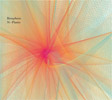 A disturbingly prophetic release, this album was sparked by Geir Jenssen's interest in the post-war Japanese economy, and especially the nuclear power plants that were built, often in geographically precarious positions. The album was completed in February of this year: one month prior to the tsunami that damaged the Fukushima power plant. Sonically it's a bit more conventional than what Touch has been doing as of late: there are actual beats and melodies on here, but with the unique Biosphere edge.
A disturbingly prophetic release, this album was sparked by Geir Jenssen's interest in the post-war Japanese economy, and especially the nuclear power plants that were built, often in geographically precarious positions. The album was completed in February of this year: one month prior to the tsunami that damaged the Fukushima power plant. Sonically it's a bit more conventional than what Touch has been doing as of late: there are actual beats and melodies on here, but with the unique Biosphere edge.
Jenssen has created a wide variety of electronic music during his nearly two-decade career, and N-Plants fits nicely into this discography.While the tracks use sequenced synth melodies and analog drum machine rhythms, it mostly takes its own route, using these conventional elements in unconventional ways."Jōyō", for example, is mostly sharp high end sounds paired with an erratic, heavily filtered rhythm that sounds nothing like music to dance to, even when the dense synth strings arrive.
"Ōi-1" patches together clicking, fragmented bass lines with short electronic pulses and blips into an idiosyncratic mix that stays even when the more traditional rhythms kick in.Tracks like "Shika-1" err more into "normal" territory, with its syrupy melodies and radio wave static augmenting an otherwise traditional ambient techno vibe, though bolstered by some great old school electro synth sounds.
The missteps are, to me, the moments in which Jenssen starts to follow more traditional blueprints of electronic music.The slow, steady beats and repetition of "Ikata-1" are nice, if forgettable in the grand scheme of things.Some of the sounds in "Genkai-1" are great on their own:deep bass rhythms and a synth line pulled right out of New Order’s "Hurt," but as a whole it just becomes a rather faceless down-tempo electronic track.
These are exceptions rather than the rule on N-Plants, however.There are more moments like the textural static and Kraftwerk like synth bleeps on "Monju-2" that come together brilliantly.The closing "Fujiko" ends the album on a high note, with its sparse structure and voice samples coming together into a calm, mellow close without being trite or cliché.
It was a bit surprising for me to hear this coming off of Touch, who have been much more abstract and oblique in their recent releases.N-Plants isn't a conventional techno album by any means, but in comparison to the recent releases from the likes of CM von Hausswolff and Phill Niblock, it feels much more traditional.There are a few bland moments but the overall sound is one that’s more compelling than many of Jenssen's peers in electronic music.
samples:
 
Read More
- Administrator
- Albums and Singles
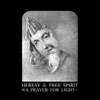 2011 is turning into the year of van Wissem. In addition to The Joy that Never Ends on Important Records, Jozef has released three collaborative records on his own Incunabulum imprint this year, including one unlikely pairing with Smegma. A Prayer for Light, recorded on Easter in 2010, features Robbie Lee, who has performed with Howling Hex and Baby Dee, as well as True Primes multi-instrumentalist Che Chen. Together they riff on a semi-ritualistic and improvised sound that makes van Wissem's music more approachable and fulfills his desire to see the lute liberated from its dusty Renaissance confines.
2011 is turning into the year of van Wissem. In addition to The Joy that Never Ends on Important Records, Jozef has released three collaborative records on his own Incunabulum imprint this year, including one unlikely pairing with Smegma. A Prayer for Light, recorded on Easter in 2010, features Robbie Lee, who has performed with Howling Hex and Baby Dee, as well as True Primes multi-instrumentalist Che Chen. Together they riff on a semi-ritualistic and improvised sound that makes van Wissem's music more approachable and fulfills his desire to see the lute liberated from its dusty Renaissance confines.
In the past three years, certain of Jozef van Wissem's compositional habits and traits have been singled out for commentary repeatedly. By now everyone knows that Jozef likes to write melodic palindromes, that he enjoys repeating these melodies over very long durations, and that he has employed some of Burrough's cut-up strategies in song forms that would otherwise sound antiquated to most ears. In addition, his lute frequently receives more attention than he does, and it's easy to understand why. Watching him play live, the lute becomes omnipresent; it's a beautiful instrument that comes with a long history, a unique sound, and peculiar mystique.
All of this makes it easy to forget just how forward-thinking van Wissem is. Whiffs of Cage-ian philosophy and minimalist sensibilities turn up in his interviews as much as they do in his music. His live sets have consisted of lute and field recordings from airports, he has played alongside Gary Lucas, whose bottle-necked resonator guitar wasn't invented until the 20th century, and he has even collaborated with legendary noise-maker, Maurizio Bianchi. Beyond the techniques and religious imagery that make up his musical persona is a performer that also wants to make the lute "sexy." On A Prayer for Light he comes close to doing that.
There is a menagerie of instruments spread across its eight brief songs, including tape machines, a portative organ, bass clarinet, banjo, bells, and a bowed rawap. There are times when they command the music more than van Wissem's lute does, and on both the first and last song, the lute isn't featured at all. When it does show up, it doesn't hog the stage. Sometimes Jozef uses it to add color to the drafty textures Chen and Lee form from their arsenal, but more frequently he turns the lute into an anchor; it provides the rhythm and forward motion, the other instruments help paint the scenery. That scenery is mostly stone walls, candle-lit rooms, dark corridors, and robed figures, so van Wissem's attitude and ascetic survive the changes in technique and emphasis.
The difference is a psychedelic edge and loose tension that arises from the way the trio interacts. There are even some rock 'n' roll moments, where booming drums and dramatic crescendos suddenly boil up from the soup of criss-crossing strings and tape. Jozef's favorite up-and-down melodies break down in places, too, causing the patterns he weaves to dissolve into tone clusters and fragmented designs. This frees the lute from its stately past—and from van Wissem's typical strategies, too. Without a particular technique or strategy guiding the group along, the music blooms and is allowed to become its own thing; the sounds breathe through the musicians rather than the musicians forcing them to leap and balk in measured ways.
I enjoy many of van Wissem's records, but I prefer hearing him like this. His compositional aspirations ring as clearly as a bell even within a group framework, and the added dimensions his band mates bring to the table, whether sexy or simply more dynamic, help underscore Jozef's singular and very contemporary language.
samples:
- LP only = no samples. Sorry!
Read More
- Administrator
- Albums and Singles
Important Records is proud to issue the fourth album, second for Important, from Nathan Amundson's Rivulets. With a beautifully authentic emotional depth Nathan's voice is his most compelling instrument, a tool for delivering pure emotion from his heart straight into yours. Representing five years of work & nearly constant touring, this album reflects the intense nature of Rivulets as a 3 piece. If you haven't seen them on tour this record will come as a revelation. Recorded, appropriately, at the Sacred Heart Music Center, a cathedral built in the late nineteenth century.
FREE MP3: Gentile Boyfriend

artist: Rivulets
title: We're Fucked
format: CD
release date: Aug 30, 2011
"The title is just a phrase that kept popping up in my head as we were recording. It reflects the feeling and atmosphere of the songs in some ways but probably has more to do with my own frustration with the world - with people and politics and the lack of any meaningful or lasting change. And just being sick of nobody out there saying anything at all. Just this completely vapid cultural/musical landscape. You know, I'm on the fringes anyway. I may as well say what I mean.
"We're Fucked" is not intended as the end of the discussion, but the beginning. It's "We're fucked. Now what?"" Nathan Amundson
Nathan Amundson is a fiscal year 2010 recipient of an Artist Support Grant from the Arrowhead Regional Arts Council, which is funded with money from the Minnesota Arts and Cultural Heritage Fund as appropriated by the Minnesota State Legislature with money from the vote of the people of Minnesota on November 4, 2008, and an appropriation from the Minnesota State Legislature.
Rivulets is the musical vehicle of singer/songwriter Nathan Amundson, who, with his spectral strumming, grainy falsetto and sparse arrangements, personifies minimalism. - CMJ
Read More
- Administrator
- Albums and Singles
Long awaited reissue of the debut release from Mehdi Amezianes Twinsistermoon project, originally released as a gorgeous handmade self released CDR in 2007, to many of Natural Snow Buildings and each of their solo project, this is the pick of all their releases, which is rather ironic being that its one of the smallest release runs in the discography of all the Natural Snow Buildings and related projects, it is infact the most limited release of all the Twinsistermoon releases. But due to the massive level of word of mouth about their releases on blogs and in the smaller press publications this release has become one of those holy grail releases. Unlessof course you have a small wedge of cash lying around doing nothing. So, finally, and with great pleasure, the much talked of reissue is finally here. The record opens with a real stunner, 'I Wish I Could Drown The World In Reverberation' is a trance inducing piece, with percussive tambourine, dreamy vocals, and shimmering strings, with a gorgeous organic rich feeling. It's followed by 'To Breath Underwater', a more pastoral folk song, akin to some late 60s/early 70s folk artists. The album as a whole focuses more on the song-based material which occasionally venture into the more far-out zone outs.
The vinyl reissue features an entire side worth of new material, all of which is exclusive to the vinyl edition and is packaged in a beautiful gatefold sleeve featuring stunning new artwork by Solange Gularte. Limited to 600 copies. 200 direct mailorder copies on regular weight coloured vinyl, 400 copies on heavyweight black virgin vinyl.
The CD reissue features an additional bonus track, which is exclusive to the CD edition and is packaged in a beautiful gatefold sleeve featuring stunning new artwork by Solange Gularte. Limited to 500 copies.
More information available at Blackest Rainbow.
Read More
- Administrator
- Albums and Singles
John Fahey: Your Past Comes Back to Haunt You (The Fonotone Years 1958-1965)
 As with all histories, context and an appreciation for the times are essential. In 1958, when the earliest of these recordings were made there were probably no more than a handful of reissues of pre-war country blues 78s available on record in the United States. The long-playing 33 1/3 record was, itself, only a recent invention. Today, with hundreds, perhaps thousands, of pre-war blues and hillbilly reissues available and in print, when it’s possible to walk into any halfway decent record store (to the extent record stores, halfway decent or otherwise, still exist) and find the complete recordings of Charley Patton or Blind Willie Johnson, it may be difficult to comprehend just how obscure and how otherworldly this music once was. — Glenn Jones, from the Introduction to Your Past Comes Back to Haunt You
As with all histories, context and an appreciation for the times are essential. In 1958, when the earliest of these recordings were made there were probably no more than a handful of reissues of pre-war country blues 78s available on record in the United States. The long-playing 33 1/3 record was, itself, only a recent invention. Today, with hundreds, perhaps thousands, of pre-war blues and hillbilly reissues available and in print, when it’s possible to walk into any halfway decent record store (to the extent record stores, halfway decent or otherwise, still exist) and find the complete recordings of Charley Patton or Blind Willie Johnson, it may be difficult to comprehend just how obscure and how otherworldly this music once was. — Glenn Jones, from the Introduction to Your Past Comes Back to Haunt You
Edited by Glenn Jones
88 page book with 5 CDs
115 tracks, most available on CD for the first time
A co-production between Dust-to-Digital and Revenant
Read More
- Administrator
- Albums and Singles
I Listen to the Wind That Obliterates My Traces: Music in Vernacular Photographs 1880-1955
 ... i listen to the wind that obliterates my traces brings together a collection of early photographs related to music, a group of 78rpm recordings, and short excerpts from various literary sources that are contemporary with the sound and images. It is a somewhat intuitive gathering, culled from artist Steve Roden’s collection of thousands of vernacular photographs related to music, sound, and listening. The subjects range from the PT Barnum-esque Professor McRea - “Ontario’s Musical Wonder” (pictured with his complex sculptural one man band contraption) - to anonymous African-American guitar players and images of early phonographs. The images range from professional portraits to ethereal, accidental, double exposures - and include a range of photographic print processes, such as tintypes, ambrotypes, cdvs, cabinet cards, real photo postcards, albumen prints, and turn-of-the-century snapshots.
... i listen to the wind that obliterates my traces brings together a collection of early photographs related to music, a group of 78rpm recordings, and short excerpts from various literary sources that are contemporary with the sound and images. It is a somewhat intuitive gathering, culled from artist Steve Roden’s collection of thousands of vernacular photographs related to music, sound, and listening. The subjects range from the PT Barnum-esque Professor McRea - “Ontario’s Musical Wonder” (pictured with his complex sculptural one man band contraption) - to anonymous African-American guitar players and images of early phonographs. The images range from professional portraits to ethereal, accidental, double exposures - and include a range of photographic print processes, such as tintypes, ambrotypes, cdvs, cabinet cards, real photo postcards, albumen prints, and turn-of-the-century snapshots.
The two CDs display a variety of recordings, including one-off amateur recordings, regular commercial releases, and early sound effects records. there is no narrative structure to the book, but the collision of literary quotes (Hamsun, Lagarkvist, Wordsworth, Nabakov, etc.). Recordings and images conspire towards a consistent mood that is anchored by the book’s title, which binds such disparate things as an early recording of an American cowboy ballad, a poem by a Swedish Nobel laureate, a recording of crickets created artificially, and an image of an itinerant anonymous woman sitting in a field, playing a guitar. The book also contains an essay by Roden.
Read More
- Administrator
- Albums and Singles
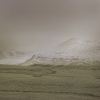 Nobody that has been following Richard Skelton's career thus far will be astonished to learn that he has added yet another new guise to his stable of projects (A Broken Consort, Carousell, etc.), but the actual content of Wolf Notes is a bit of a dramatic departure.  For one, it is a collaboration (with his wife, Autumn Richardson) rather than a solo endeavor.  Secondly, it is fairly vocal-centric, which caught me a bit off-guard.  In fact, it took me several listens to fully warm to it, as some of my favorite Skelton-esque qualities are downplayed.  In time, however, I grew to appreciate *AR as a uniquely  innocent and anachronistic entity all its own.
Nobody that has been following Richard Skelton's career thus far will be astonished to learn that he has added yet another new guise to his stable of projects (A Broken Consort, Carousell, etc.), but the actual content of Wolf Notes is a bit of a dramatic departure.  For one, it is a collaboration (with his wife, Autumn Richardson) rather than a solo endeavor.  Secondly, it is fairly vocal-centric, which caught me a bit off-guard.  In fact, it took me several listens to fully warm to it, as some of my favorite Skelton-esque qualities are downplayed.  In time, however, I grew to appreciate *AR as a uniquely  innocent and anachronistic entity all its own.
Wolf Notes is paradoxically an album that is both otherwordly and singularly natural, drawing its inspiration from the landscape surrounding the small Cumbrian village of Ulpha.  While "Ulpha" is descended from Norse words meaning "the hill frequented by wolves" (explaining the album's title), there is nothing sinister or feral happening here, though there is a feeling of primal timelessness that seems thematically appropriate:  Wolf Notes simply sounds like it was conceived and recorded in a world that is temporally and geographically very far from the one most of us inhabit.  That fits quite comfortably with Skelton's previous work: despite being deeply emotive and "human," it seems to be invariably inspired by places where there aren't many people around and that look pretty much exactly the same as they did a thousand years ago.
The five songs function as movements within a single work, as the same themes recur and evolve as the album progresses.  One lilting wordless melody in particular (sung by Autumn) serves as the album's central motif,  but it doesn't appear in every single song (though it is frequently hinted at or deftly danced around).  As for the underlying music, Skelton stays quite firmly within his area of expertise, weaving a groaning and shimmering multilayered web of treated violin drones.  I have always loved his playing and he is characteristically brilliant here, creating a vibrant and prickly halo of microtones and string buzz all around his slow-motion chamber melancholia. Incidentally, a "wolf note" is a type of dissonance, giving the album title a dual meaning.  I have no idea whether or not Skelton consciously uses them here though (obviously, it would be an egregious and unforgiveable thematic faux pas if he didn't).
The heightened sustain, reverb, and spectral after-images enhancing Richard's bowed strings are *AR's only conspicuous nods to modern recording, as Richardson's voice stays fairly pure and unmanipulated throughout.  Also, Skelton generally uses the studio to make himself sound "hyper-natural" rather than less natural.  That difference is important.  Similarly, there is also a conspicuous devotion to old-fashioned virtues like patience, clarity, and simplicity here, as the entire album unfolds at an unhurried pace that accumulates power and momentum simply through inventive repetition, variation, and thoughtfully constructed harmonies.
I think I still prefer some of Skelton's darker and grittier solo work to *AR, but this is definitely an inspired and elegant new facet to his oeuvre.  Actually, in some ways, Wolf Notes might be the most radical thing that he has done yet: there is an uncynical embrace of purity, place, nature, and raw beauty here that is squarely in opposition to our post-modern, post-everything culture (the Sustain-Release version of this album comes with a chapbook of poems about Urpha that even includes a list of native grasses).  He has touched upon all those things before, certainly, but the addition of Autumn's bittersweet voice makes it all seem a bit more vulnerable and human.  Maybe being defiantly pastoral will be the new punk.
Samples:
Read More
- Administrator
- Albums and Singles
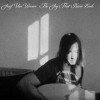 Lutenist and contemporary composer Jozef van Wissem made his debut appearance on Important Records when James Blackshaw included his sublime piece, "The Mirror of Eternal Light," on his personally curated The Garden of Forking Paths. Fast-forward three years, and van Wissem has released his third full-length for Important: a steady refinement of his craft, clocking in at five songs, 37 minutes (plus a CD-only bonus track).
Lutenist and contemporary composer Jozef van Wissem made his debut appearance on Important Records when James Blackshaw included his sublime piece, "The Mirror of Eternal Light," on his personally curated The Garden of Forking Paths. Fast-forward three years, and van Wissem has released his third full-length for Important: a steady refinement of his craft, clocking in at five songs, 37 minutes (plus a CD-only bonus track).
"The Joy that Never Ends" kicks off the album with three minutes of carefully picked, interweaving lute notes and harmonics, echoing the title track from van Wissem's first Important LP, It Is All that Is Made, in its structure. Halfway through, Jeanne Madic provides a whispered vocal line in French, repeated until the track's end: "Tout ira bien," translated as "All shall be well." That general feeling, one of peace and well-being, runs throughout van Wissem's work as a whole, from his mastery of the Baroque lute (an instrument dating back to 17th century Renaissance days) to his Biblical track titles ("His Is the Ecstasy") and implicit themes of love, family and fatherhood. Van Wissem's music is plaintive, uncluttered and stark—and, more often than not, hypnotic in its disciplined use of structure, repetition, tone and space.
There is one notable departure on The Joy that Never Ends in contrast to his previous Important works. Four tracks in, "Concerning the Beautiful Human Form after Death" finds van Wissem collaborating with filmmaker Jim Jarmusch, himself an avid musician and music fan. (Check out the diverse line-up for his All Tomorrow's Parties festival as a recent example, or his collaborations with Iggy Pop, Tom Waits, GZA and other A-list musicians in Coffee and Cigarettes, a collection of short films.) While van Wissem plays a drawn-out series of minimal note clusters on his lute, Jarmusch provides a backdrop of radiating guitar feedback where, typically, there would be silence. It's a bold addition, with Jarmusch showing an impressive deal of subtlety and restraint, letting van Wissem's playing remain center stage.
Like his buddy Blackshaw, van Wissem is often at his best when he stretches his compositional abilities in a long-form setting, ten or fifteen minutes at a time. After four shorter pieces, "The Hearts of the Daughters Are Returned to Their Mothers" fits the bill perfectly, with van Wissem weaving layer upon layer of notes into a beautifully evolving, kaleidoscopic whole. At times, his playing sounds so complex and deeply layered, it's hard to believe van Wissem doesn't have at least twenty fingers—or that he hasn't overdubbed his playing a bit, as he's known to do. In any case, it makes for a gorgeous effect, bringing the piece to a peak three times in 16 minutes. As on the title track, Madic provides a few lines of French vocals as a coda. (Don't ask me to translate—I used Google the first time around.)
"The Great Joy" ends the CD version, van Wissem's playing stark and minimal once again. It is inessential—not a must-have if you'd rather enjoy the snap-crackle-pop of a vinyl pressing than a shiny silver disc—but I found it an effective digestif after the main course.
Samples:
- The Joy that Never Ends
- Concerning the Beautiful Human Form after Death
- The Hearts of the Daughters Are Returned to Their Mothers
Read More
- Administrator
- Albums and Singles
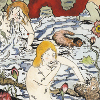 I was both surprised and amused when Natural Snow Buildings released an entire full-length album of all new material to celebrate Record Store Day, as nobody has such a voluminous backlog of material that they can afford to do something like that (well, almost nobody).  Even more unexpectedly, Chants of Niflheim feels like a thematically coherent and deliberately sequenced Natural Snow Buildings album rather than just some collection of curiosities and orphaned songs.  While I wouldn't characterize it as "uniformly brilliant" or "radically different," it is nevertheless a very solid effort that boasts sufficient flashes of greatness to make it unmissable for existing fans.
I was both surprised and amused when Natural Snow Buildings released an entire full-length album of all new material to celebrate Record Store Day, as nobody has such a voluminous backlog of material that they can afford to do something like that (well, almost nobody).  Even more unexpectedly, Chants of Niflheim feels like a thematically coherent and deliberately sequenced Natural Snow Buildings album rather than just some collection of curiosities and orphaned songs.  While I wouldn't characterize it as "uniformly brilliant" or "radically different," it is nevertheless a very solid effort that boasts sufficient flashes of greatness to make it unmissable for existing fans.
In Norse mythology, Niflheim (or Niflheimr) is a cold, bleak region in the lowest level of the universe that translates roughly as "home of mists" (it's beneath the third root of Yggdrasil and somewhat in the vicinity of The Shore of Corpses, if you happen to have a map handy).  That mist-filled realm, presumably still ruled by the goddess Hel, is probably also notable for being populated by the dead (with a strong emphasis on souls that died unheroically).  Despite that singularly sad and macabre inspiration, Chants of Niflheim is not a particularly dark album by Natural Snow Buildings' standards.  Nevertheless, the title is still quite appropriate, as this four-song suite sounds hazy, mysterious, pagan, and hallucinatory enough to do justice to its namesake.
I've seen the term "dream-drone" used a few times to describe the recent work of Natural Snow Buildings and that is probably the most succinct way possible to describe the bulk of this release.  Of the four pieces, "Templar's Ritual" stays most closely rooted to that aesthetic, drifting along for 17 delirious minutes of dense, quivering swells and ephemeral, blurred theremin-like tones.  Mehdi and Solange excel at this type of song– when they get it exactly right, it almost feels like the very air is shimmering.  "Templar's Ritual" does not quite hit that level, but it is still pretty likable.  As is "Chants of the Niflheim, Part Two," which takes an unexpectedly warm and blissed-out tone for most of its duration, before ultimately turning somewhat menacing near the end.  Unfortunately, I've heard too many "straight" Natural Snow Buildings drone pieces at this point for them to fully resonate with me anymore.  Those pieces are often great, but I am like a greedy child that ate way too much of his favorite candy.  Fortunately, Mehdi and Solange have also grown quite adept at inventively twisting and subverting that template.
One such piece is the more pagan-influenced opener "Chants of Niflheim, Part One," in which buzzing drones, cymbal washes, and tambourine-heavy percussion evoke a darkly ritualistic atmosphere.  The album's enigmatically titled closer reaches similar highs.  "H. Scudder" most likely takes its inspiration from the late H. Scudder Mekeel, who was one of the first anthropologists to seriously study American Indian culture.  His fascination with the disintegration of indigenous cultures makes him an appropriate choice here.  The piece itself does not offer many clues, sadly, though it does sound like a surreal and eerily beautiful funeral procession march (perhaps for the death of an entire culture).  It also sounds like something of a minor masterpiece, fluidly drifting through several different movements: Mehdi's unsettlingly doubled-vocal folk musings, heavy swells of buzzing drones, wounded-sounding piano cascades, and something that sounds like the most forlorn parade in the world.  Even better, almost every single one of the individual segments is memorably great– it's a absolutely killer song.
Stylistically, Chants of Niflheim falls very much in the vein of the last Natural Snow Buildings album (Waves of the Random Sea).  So much so, in fact, that it feels like its second half (and not like bonus material either).  I wish more bands would blindside me with unexpected addendums to classic, beloved albums like this.  I wonder if that was their conscious plan.  Probably not, but regardless of its intended purpose (the new album, a tease before the "real" new album, a fun surprise, etc), pieces like "H. Scudder" and "Chants of Niflheim, Part One" ensure that this a fairly exciting and noteworthy addition to Mehdi and Solange's massive discography.
Samples:
 
 
Read More
- Administrator
- Albums and Singles
 I was introduced to Bowery Electric's 1996 album when it spent considerable time in rotation at Florida State's student-run radio station, V89. I spent dozens of hours every week delivering pizzas and especially on late shifts or on the way home, tracks from Beat felt like the perfect accompaniment to my directionless malaise.
I was introduced to Bowery Electric's 1996 album when it spent considerable time in rotation at Florida State's student-run radio station, V89. I spent dozens of hours every week delivering pizzas and especially on late shifts or on the way home, tracks from Beat felt like the perfect accompaniment to my directionless malaise.
Beat was a monolithic accomplishment from a band that peaked in the middle of their short career. Bowery Electric's 1995 self-titled debut was fine, but something about it always felt a little half-baked. It wanted to soak in slowly-evolving melodies and buzzing drones but it never quite committed to those things. In some ways it felt heavily-indebted to the work of a lot of contemporaries but it never stamped the band's signature on the landscape. Beat, on the other hand, was like Bowery Electric's version of the Hollywood sign pinned to the horizon of what people were calling "post rock." It was a massive and unique record that distilled the essence of that "Kranky sound" into something new.
For the most part, the band ditched live drums for loops on Beat and that decision added a tremendous amount of character. Every time I see a hip hop act with a live drummer who tries to recreate the beats on a kit, I'm disappointed at the loss of that particular quality that comes from stolen sounds. Bowery Electric weren't masters of the sampler or sequencer by any stretch (note the mis-looped beats on Lushlife or the slight flam to the 808 drops on Beat's track "Without Stopping") but they put those tools to use in a way that separated them from all of the other bands playing slow, instrumental rock with the same set of instruments.
On Beat, the bass lines rose to the surface as if someone had gotten a hold of the band's master recordings and decided to make dub mixes out of them. Nothing gets too fast either, a fact that helps the album to maintain a consistent vibe that the other Bowery Electric records missed. I can drop the needle anywhere on Beat and find a perfect reflection of the whole album. Still, there's enough variety within that sound for songs as different as "Fear of Flying" and "Postscript" to feel like extensions of the same idea. The band was playing with samplers and the result was that fantastic kind of naive serendipity that so often strikes when artists work with new and not-terribly-familiar tools.
There are times when a band hits a magical stride and everything comes together through luck or hard work or some combination of unknowable forces to create a perfect album and somehow Bowery Electric made that happen in 1996. Beat sounds very much like the product of intent and experimentation which leaves it rough around the edges in the way that part-electronic music needs to be to sound honest. In fact, after Beat's perfection, 1999's follow up, Lushlife felt like a major miscalculation that took the band into some kind of pop-oriented trip-hop direction. When I saw Bowery Electric on tour with Main, it was clear that they were trying to embrace some of the hip hop aesthetic that had informed their songwriting (their shirts were even a goofy play on the Adidas logo,) but all of that came off like a band that didn't quite understand itself.
The magic of Beat lied in its looping melancholy. Depression can work like a cycle where dour thoughts feed bad moods that beget somber reflections and so on. The songs on Beat worked like that perfectly, all built from simple bass lines, guitar loops, drones, and layers of fuzz that sometimes rode the wave of a drum loop but often just spiraled around in their own sonic soup. Beat was not about style or about the mashup of drone-rock with hip hop; it was about the feeling of trudging through hour after hour, day after day, sometimes peaceful, sometimes mournful, but always destined to wind back up at the same place where you started. That might be the kind of theme that causes a band to stagnate by writing the same record over and over, but in Bowery Electric's case, it seems to have been more like a singular vision that was executed tremendously once, and then left behind. Beat remains one of the records I listen to more often than any other, even 15 years after it was released.
samples:
Read More
- Administrator
- Albums and Singles
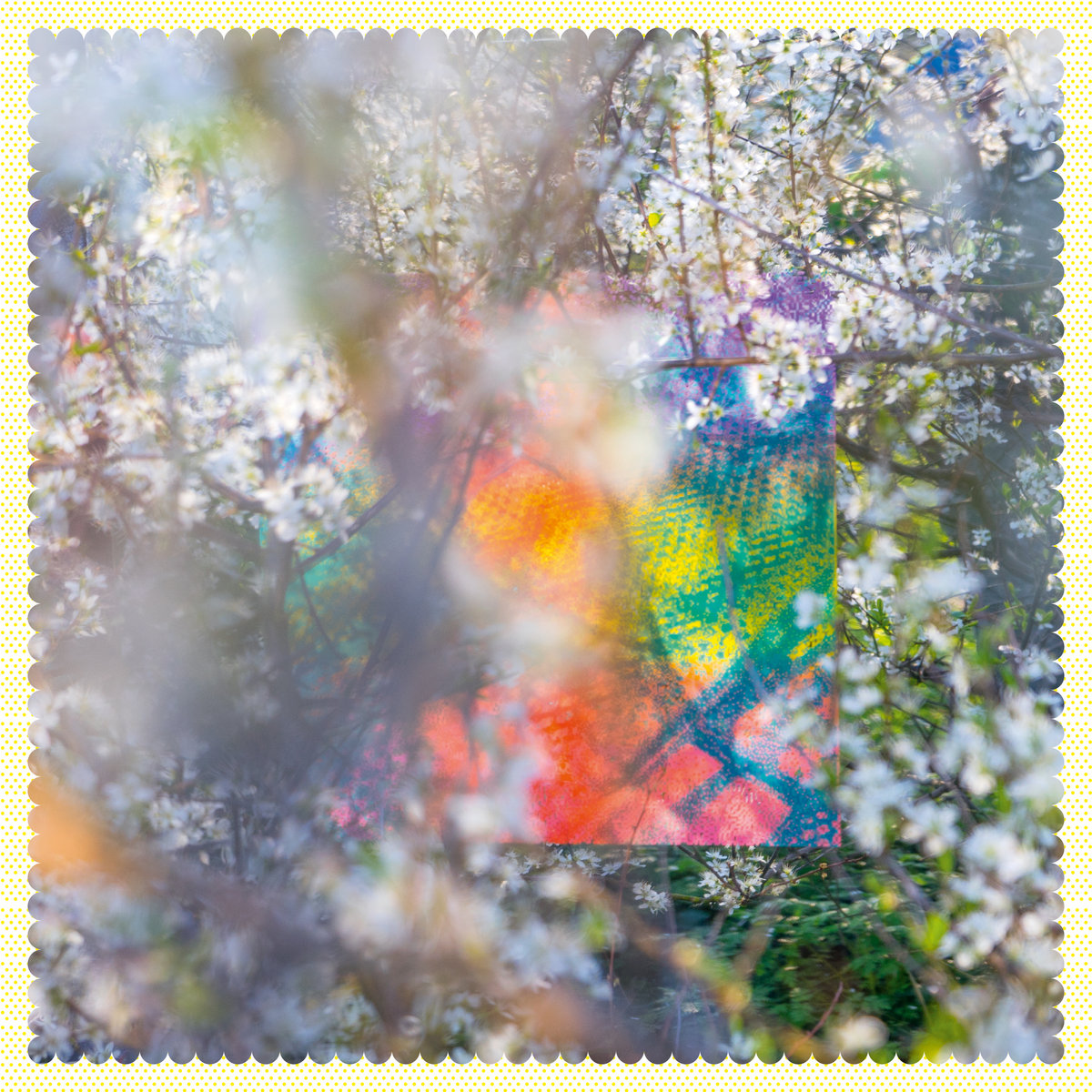
Sixteen Oceans is sixteen tracks of the innovative and varied explorations Kieran Hebden is known for, weaving danceable and airy, meandering sounds—and everything in between—into a colorful sonic tapestry. For this album, he creates a sweet retreat of wistful reverie, wavering between fragile notes and jubilant grooves, serving up a suite of tunes that offer a welcoming release and leveraging music’s power to restore. Like the oceans referenced, it’s a fresh breath of fresh, invigorating air, soothing and uplifting in a way that requires little in the way of listener participation other than to sit back and enjoy the ride—a welcome change from much of 2020.
Text
It may have been unintended at the time, but there is a feeling of healing throughout this album: harps, chimes, sitar, dulcimer, flute, timpani, bells, harpsichord, and more are strewn through dreamy synthesizer sounds. The interspersion of bird calls further add to this effect. The primary tracks are held together by the infrequent ambient interlude that make for peaceful listening, but even the lively tracks are bouyed by underpinnings of "peace through movement." Have a listen to "Something in the Sadness" for reference, a track exuding dancefloor energy with a persistent zen-like beat, but bubbling with sensuality and gentleness by way of a subtle strike of twinkling keys, calculated rhythm of background chimes, and a soft layering of harpsichord.
From the outset, the album starts strong with the energetic "School." There are five other "physical" movers: "Baby," "Teenage Birdsong," "Love Salad," "Insect Near Piha Beach" and "Something in the Sadness." Yet, with all the subtleties at play in these tracks, they are candidates for cross-overs to the more "mental" movers like "Harpsichord," "Romantics," "Bubbles At Overlook 25th March 2019" (a fairly self-explanatory title), and especially "4T Recordings." This track is an ambient mantra, an electronic raga of atmospheric proportions, that takes time to get into but is rewarding as it builds. It strikes a polar opposition to the more physical tracks, but is a prime mental mover that encourages the listener to get lost in. My only complaint is that 4T ends too abruptly, waking me from my reverie; thankfully, it is followed by the gorgeous "This is For You," a modulated piano-driven interlude populated with bird and water sounds, eventually flowing into the closer "Mama Teaches Sanskit" which further repeats themes of nature and fully retreats into the mental model of movement, moving far from the dancefloor and into the ears.
This album was released in March of this year, so why write about it in November? This review follows one of the most contentious and divisive elections in American history, and Four Tet’s blissful, dancefloor music is exactly the cure for what ails after a long, arduous journey. This is a prime example of the power of music to lift spirits, and Four Tet’s music serves as a reminder of the power to unite people on the dancefloor, exuding an optimism of it's return.
Read More


